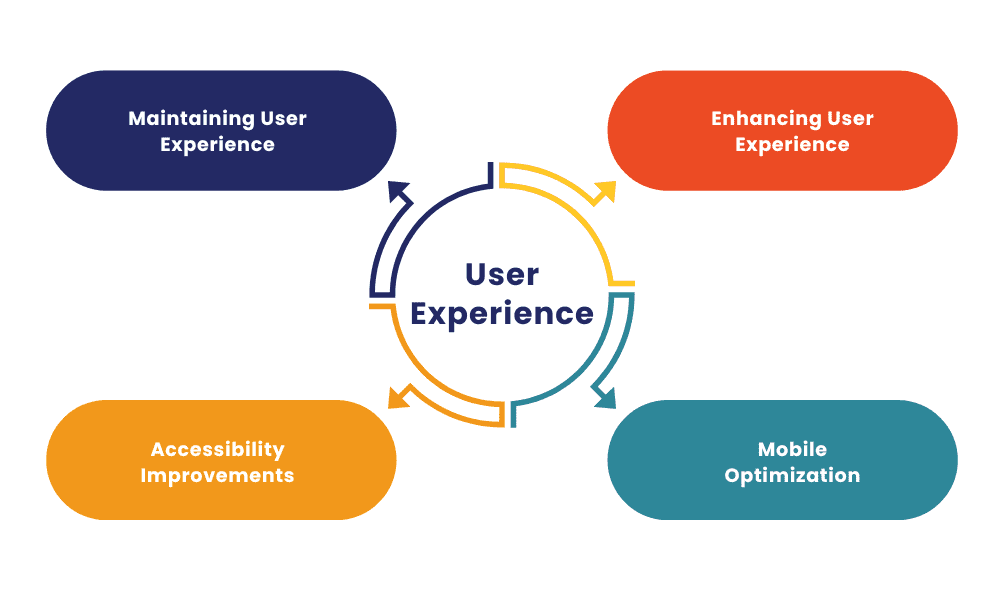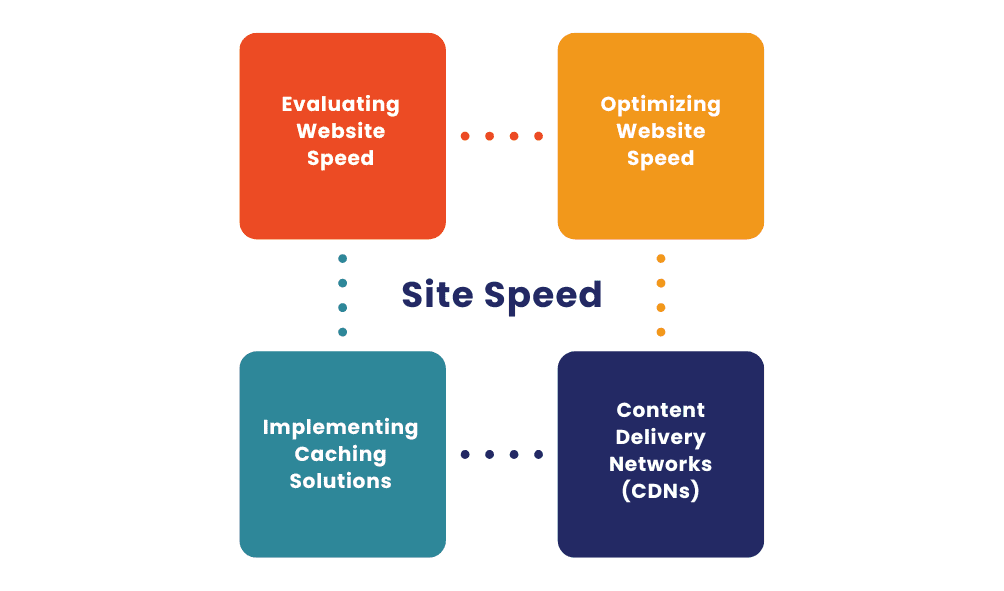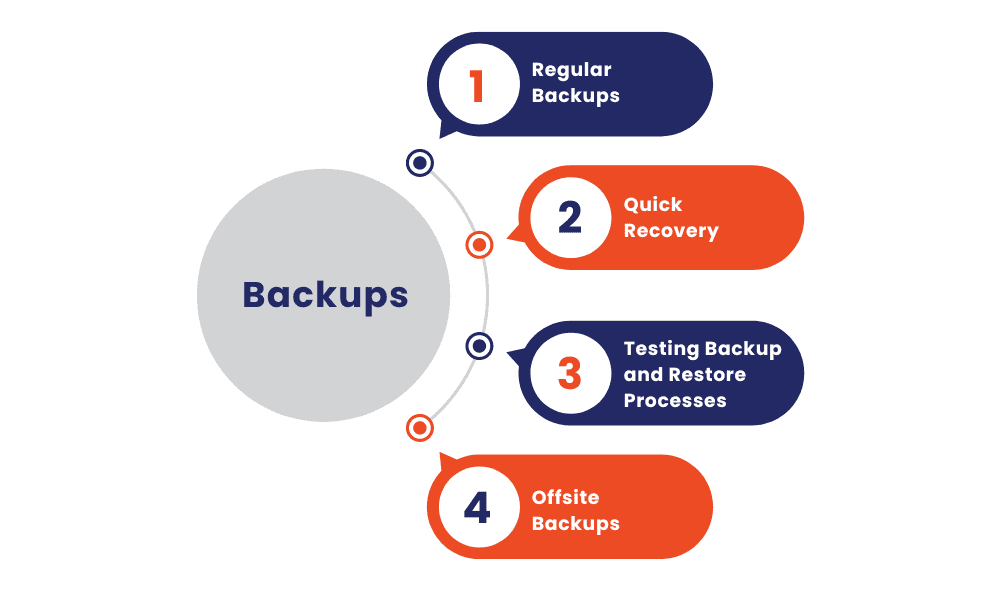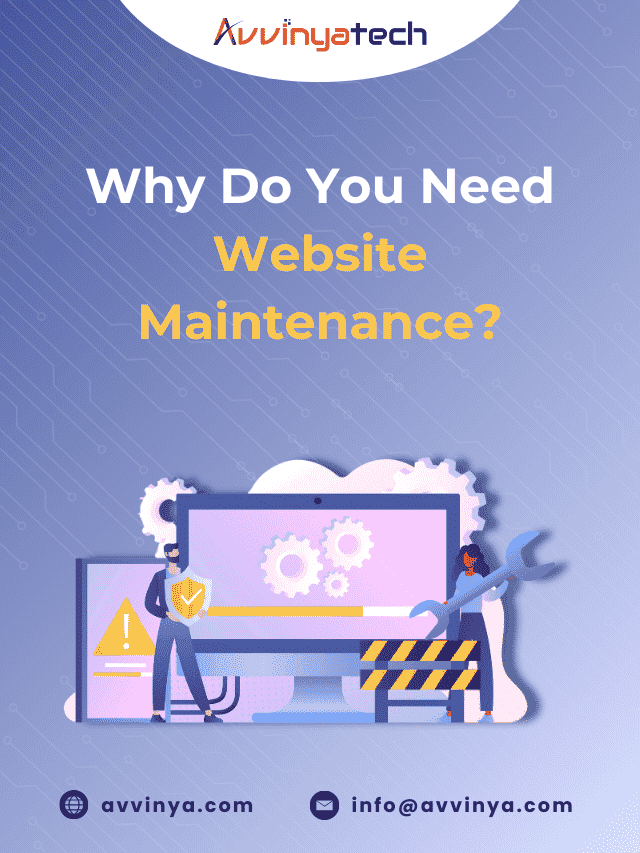Why Do You Need Website Maintenance?
A website serves as the face of your business. It’s the first point of contact for many potential customers and clients, and it plays a critical role in shaping their perceptions of your brand. However, creating a website isn’t a one-and-done deal. Just like any other asset, it requires regular upkeep to ensure it continues to function optimally. Website maintenance is an ongoing process that involves a variety of tasks aimed at keeping your site secure, user-friendly, and effective at driving traffic and conversions. Let’s delve into the numerous reasons why website maintenance is indispensable for your online presence.
Security

Protecting Against Hackers
One of the foremost reasons for regular website maintenance is security. Cyber threats are constantly evolving, with hackers always looking for vulnerabilities to exploit. A neglected website becomes an easy target for cybercriminals who can deploy various types of attacks, from injecting malicious code to stealing sensitive information. Regular maintenance ensures that your website’s security measures are up-to-date, significantly reducing the risk of a security breach.
Updating Security Protocols
Web technologies and security protocols are continuously updated to counteract new threats. By regularly maintaining your website, you can implement the latest security patches and updates, safeguarding your site against potential attacks. This includes updating your content management system (CMS), plugins, themes, and any other software components your website relies on.
Preventing Malicious Software
Malicious software, or malware, can wreak havoc on your website and compromise sensitive data. Routine maintenance involves conducting regular scans for malware and other security vulnerabilities. If any malicious software is detected, immediate action is taken to remove it. This proactive approach not only protects your website but also ensures the safety of your visitors, thereby maintaining their trust.
Implementing Advanced Security Measures
Beyond basic updates, advanced security measures such as firewalls, intrusion detection systems, and secure socket layer (SSL) certificates are crucial. These measures add extra layers of protection, making it significantly harder for hackers to breach your website. Regular maintenance includes checking the effectiveness of these security tools and updating them as needed.
User Experience

Maintaining User Experience
User experience (UX) is a critical component of any successful website. A well-maintained site provides a seamless and enjoyable experience for visitors, encouraging them to stay longer and engage more deeply with your content. Issues such as broken links, outdated content, and slow loading times can frustrate users and drive them away. Regular updates and fixes ensure that your website remains functional and engaging.
Enhancing User Experience
Beyond maintaining the current user experience, regular updates allow you to incorporate new features and improvements. This can include redesigning your website to reflect modern aesthetics, improving navigation to make it easier for users to find what they’re looking for, and adding interactive elements such as chatbots or social media feeds. These enhancements can make your website more appealing and user-friendly, leading to higher engagement and conversion rates.
Accessibility Improvements
Website maintenance also involves making sure your site is accessible to all users, including those with disabilities. This can involve updating your site to comply with the latest web accessibility standards, such as the Web Content Accessibility Guidelines (WCAG). Regularly reviewing and improving your site’s accessibility can enhance the user experience for all visitors and ensure that your site is inclusive.
Mobile Optimization
With the increasing use of mobile devices to access the internet, ensuring your website is mobile-friendly is more important than ever. Regular maintenance involves testing and optimizing your site for mobile devices, ensuring that it loads quickly and displays correctly on smaller screens. This not only improves the user experience but also boosts your search engine rankings, as search engines like Google prioritize mobile-friendly sites.
SEO (Search Engine Optimization)

Regular SEO Audits
SEO is a critical aspect of online visibility. Regular SEO audits help identify areas for improvement, ensuring your website remains competitive in search engine rankings. These audits analyze your website’s performance, keywords, backlinks, and overall SEO strategy. By addressing any issues and optimizing your site, you can improve its visibility and attract more organic traffic.
Keyword Research
Maintaining your website includes ongoing keyword research to stay relevant. The digital landscape is constantly changing, and the keywords that drive traffic today may not be as effective tomorrow. Regular research helps you adjust your content to match current search trends, ensuring that your website remains relevant and continues to attract visitors.
On-Page Optimization
On-page optimization involves updating meta tags, alt text, headers, and content to improve search engine rankings. Regular maintenance ensures these elements are optimized, helping your website attract more organic traffic. This can involve revising content to include new keywords, updating meta descriptions to improve click-through rates, and ensuring that all images have appropriate alt text.
Link Building
Link building is an essential part of SEO, and regular maintenance includes checking and updating your backlink profile. This helps improve your website’s authority and search engine ranking. Building high-quality backlinks from reputable sites can significantly boost your SEO efforts, driving more traffic to your website and improving its overall credibility.
Monitoring SEO Performance
SEO is not a set-and-forget task. It requires continuous monitoring to ensure that your strategies are effective. Regular maintenance involves tracking your site’s performance in search engine rankings, analyzing traffic patterns, and adjusting your SEO tactics as needed. This ongoing effort helps ensure that your website remains competitive in search results.
Site Speed

Evaluating Website Speed
Site speed is a critical factor for both user experience and SEO. A slow-loading website can frustrate visitors and lead to higher bounce rates, where users leave your site without interacting with it. Regular evaluations help identify issues that might be slowing down your website, such as large images, inefficient code, or server issues.
Optimizing Website Speed
Once issues are identified, optimization efforts can begin. This might involve compressing images, minifying code, or upgrading your hosting plan. A faster website not only improves user experience but also boosts your search engine ranking. Search engines like Google consider site speed as a ranking factor, so a faster site can help you climb higher in search results.
Implementing Caching Solutions
Caching is a technique that stores copies of your website’s pages, reducing the load on your server and speeding up page load times for users. Regular maintenance includes implementing and updating caching solutions to ensure your site loads quickly for all visitors.
Content Delivery Networks (CDNs)
A Content Delivery Network (CDN) distributes your website’s content across multiple servers around the world, ensuring that users can access your site quickly regardless of their location. Regular maintenance involves setting up and optimizing your CDN to improve site speed and performance.
Backups

Regular Backups
Regular backups are an essential part of website maintenance. They ensure that your data is safe and can be quickly restored in case of a mishap. Whether it’s a server crash, a hacking attempt, or accidental data deletion, having a recent backup can save you a lot of trouble.
Quick Recovery
In the event of a website issue, quick recovery is crucial. Regular backups allow for rapid restoration, minimizing downtime and ensuring your website remains accessible to users. This is particularly important for e-commerce sites or businesses that rely heavily on their online presence, as downtime can lead to lost revenue and damage to your reputation.
Testing Backup and Restore Processes
It’s not enough to simply take regular backups; you also need to test your backup and restore processes to ensure they work correctly. Regular maintenance includes verifying that backups are being taken properly and that you can restore your site from a backup if necessary. This ensures that you’re prepared for any eventuality.
Offsite Backups
To further safeguard your data, it’s important to store backups in an offsite location. This protects your data from physical damage, such as a fire or flood, that could affect your primary server. Regular maintenance involves setting up and managing offsite backups to ensure your data is secure.
Performance Monitoring

Tracking Website Performance
Regular maintenance includes monitoring your website’s performance to identify and address any issues promptly. This involves tracking metrics such as page load times, server response times, and uptime. By watching these metrics, you can ensure that your website is performing optimally.
Analyzing User Behavior
Understanding how users interact with your website can provide valuable insights into areas for improvement. Regular maintenance involves analyzing user behavior through tools such as Google Analytics, identifying patterns and trends that can inform your website optimization efforts.
A/B Testing
A/B testing involves comparing two versions of a webpage to see which one performs better. Regular maintenance includes conducting A/B tests to optimize various elements of your site, such as headlines, images, and calls to action. This can help improve user engagement and conversion rates.
Heatmaps
Heatmaps provide a visual representation of how users interact with your site, showing which areas receive the most attention. Regular maintenance includes analyzing heatmaps to identify areas where users are clicking, scrolling, or spending the most time. This can inform your optimization efforts and help you create a more user-friendly site.
Compliance and Legal Considerations

Ensuring Legal Compliance
Website maintenance involves ensuring that your site complies with all relevant laws and regulations. This can include privacy laws such as the General Data Protection Regulation (GDPR) in the European Union or the California Consumer Privacy Act (CCPA) in the United States. Regular maintenance includes reviewing and updating your privacy policy, cookie consent mechanisms, and other legal requirements.
Accessibility Compliance
As mentioned earlier, ensuring your site is accessible to all users is crucial. This includes complying with accessibility laws and guidelines, such as the Americans with Disabilities Act (ADA) in the United States. Regular maintenance involves conducting accessibility audits and making necessary updates to ensure compliance.
Content Updates
Laws and regulations can change over time, and it’s important to keep your website content up to date. Regular maintenance includes reviewing and updating your site’s legal content, such as terms of service, privacy policies, and disclaimers, to ensure compliance with the latest requirements.
Branding and Design

Keeping Your Design Fresh
A website’s design can quickly become outdated as design trends evolve. Regular maintenance involves updating your site’s design to keep it fresh and appealing. This can include redesigning your homepage, updating your color scheme, or incorporating new design elements.
Consistent Branding
Maintaining a consistent brand image across all your online platforms is crucial for building brand recognition and trust. Regular maintenance includes reviewing your site’s branding elements, such as logos, fonts, and colors, to ensure they are consistent with your overall brand identity.
User Feedback
Collecting and analyzing user feedback is an important part of website maintenance. Regularly reviewing feedback from your users can help you identify areas for improvement and make necessary updates to enhance the user experience.
Content Refresh
Keeping your website content fresh and relevant is essential for maintaining user engagement and improving SEO. Regular maintenance involves reviewing and updating your site’s content, removing outdated information, and adding new content to keep your site relevant.
Technical Health

Fixing Broken Links
Broken links can frustrate users and negatively impact your SEO. Regular maintenance includes checking for and fixing any broken links on your site, ensuring a seamless user experience.
Updating Plugins and Software
Websites often rely on various plugins and software components to function correctly. Regular maintenance involves updating these components to ensure they are compatible with the latest web technologies and security standards.
Monitoring Server Health
Ensuring your server is running smoothly is an important part of website maintenance. Regularly monitoring server performance and addressing any issues promptly can prevent downtime and ensure your site remains accessible to users.
Database Optimization
Over time, your website’s database can become cluttered with unnecessary data, slowing down your site. Regular maintenance includes optimizing your database by removing redundant data and improving its structure, ensuring your site runs efficiently.
Conclusion
Continuous Improvement
Website maintenance isn’t just about fixing issues; it’s about continuous improvement. By regularly maintaining your website, you can ensure it stays secure, user-friendly, and optimized for search engines. This ongoing effort helps you stay ahead of your competitors and ensures your site remains an effective tool for driving traffic and conversions.
Professional Assistance
While some aspects of website maintenance can be handled in-house, others may require professional assistance. Partnering with a reliable web maintenance service can provide you with the expertise and resources needed to keep your website in top shape. This can include everything from security updates and SEO optimization to design enhancements and performance monitoring.
Investment in Success
In conclusion, website maintenance is an ongoing necessity. From security to user experience, SEO, site speed, and backups, regular maintenance ensures your website remains effective and competitive in the digital landscape. By investing in website maintenance, you safeguard your online presence and support the growth and success of your business.
Future-Proofing Your Website
The digital landscape is constantly evolving, and regular maintenance helps future-proof your website. By staying ahead of technological advancements and industry trends, you can ensure that your site remains relevant and effective in the long term. This proactive approach helps you adapt to changes and seize new opportunities as they arise.
Building Trust and Credibility
A well-maintained website builds trust and credibility with your audience. It shows that you care about their experience and are committed to providing a secure, user-friendly, and up-to-date online presence. This can lead to increased customer loyalty and higher conversion rates, ultimately driving the success of your business.
website maintenance is not just a technical necessity; it’s a strategic investment in your business’s success. By keeping your site secure, optimized, and user-friendly, you can create a positive impression on your visitors, improve your search engine rankings, and drive more traffic and conversions. So, don’t neglect your website—regular maintenance is the key to unlocking its full potential and ensuring your online success.
At avvinya, We Have Pros and Peers for More Insights!
Connect with our professional web and app specialists to achieve impeccable development and seamless execution. Allow us to comprehend your industry obstacles and deliver efficient solutions, unlocking your business potential.
Contact us today for further information +1 832 426 2084
+1 832 426 2084 














